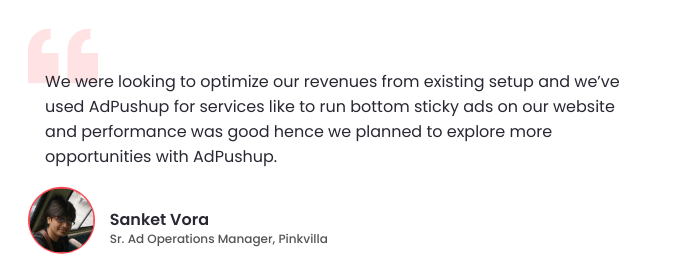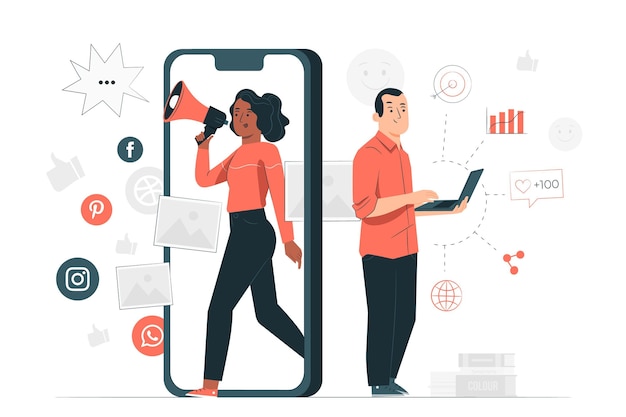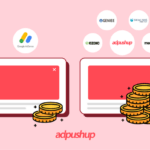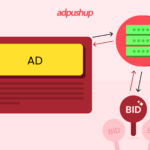Looking for some interesting facts about banner and display advertising? Check out this list of 10 fun facts that you probably didn’t know. From the history of banner ads to the current state of the industry, this list has it all.
So whether you’re a casual observer or a die-hard advertiser, you’re sure to learn something new. Start reading now!
Display Advertising/Banner click-through rates (CTR) are at all-time low. To anyone reading, This is not any new information. The downward trend has been visible since the early 2000s.
I recently came across an interesting article from Mike Volpe on the subject of Display advertising, which presents 10 Shocking Facts about Display Advertising. It gives you a number of reasons why Banner advertising is not very effective. I don’t totally agree with this.
Banner Advertising is as effective as the person working on its strategy. The success depends upon how much constructive effort have gone into it, just like any other form of online Marketing.
The ad creative, ad copy and overall strategy play an important role. After all, it’s a $16 Billion market. Nobody would spend that much money, without any realistic returns.
Before we take a look at the interesting facts about digital advertising. Let’s first understand exactly what is display advertising.
What is Display Advertising?
Display advertising is a form of online display advertisement that uses visuals to attract attention and drive traffic to a website. This can be done through banner ads, rich media ads, video ads, or other types of visual content. Display advertising is an effective way to reach a wide audience, and can be used to promote products, services, or brand awareness.

Types of Display Adertisements
1. Remarketing
Online display advertisement that seeks to reconnect with website visitors who did not convert is called remarketing or retargeting. Such campaigns usually have high ROI, help increase brand awareness, and provide marketers with valuable insights. Working with a retargeting company can further enhance these campaigns by utilizing advanced targeting methods and tracking technologies to re-engage potential customers.
2. Contextual Targeting
Contextual targeting is a method of display advertising that delivers ads to a website that are relevant to the page’s content. Google Ads scans your content to comprehend what it’s about, and then your content is cross-referenced with keywords, topics, browsing habits, location, and other factors.
3. Placement Targeting
Another type of display digital advertising is placement targeting. It is the targeting method in which an advertiser gets to choose the websites on which their ads will appear. This is in contrast to other methods, such as Google Ads, where an algorithm picks the websites on which an ad will appear.
For an example, if you’re selling gym accessories, it would behoove the advertiser to place their ads on websites that provide fitness tips, muscle-building advice, and workout recommendations.
4. Topic Targeting
Targeted topics let you select particular topics of web pages to show your ads on. Google then chooses web pages related to your topic to couple with your ads. The upside to this form of advertising is that you can exhibit your ads on a vast set of websites. This gives you the opportunity to reach people who are more probable to convert.
This allows for your ad to be served on a website that is contextually relevant to the user, increasing the chances that they will take notice of your ad.
5. Internet-based Targeting
Internet-based targeting is a type of display advertising where Google offers two types of targeting for people who may be interested in what you’re selling.
This includes in-market audiences and affinity audiences.
– In-market audiences are people who are actively researching or considering products or services in a particular market. It’s a kind of an audience, which is looking to purchase a product or service very soon.
– Affinity audiences, on the other hand, are people are not actively looking to make a purchase. But they have expressed interest in a particular topic. Google looks at customers’ profiles, interests, passions and lifestyles when trying to figure out what they want.
For example, somebody who is always reading about fitness or gym equipment and tips is telling Google that they’re interested in health and wellness.
By now, we hope you understood exactly what is display advertising. That said, let’s take a look at the interesting about display advertising that can leave you awestruck.

- The average click-through rate of display ads is 0.1%.
- Only 8% of Internet users account for 85% of clicks on display ads. (This was taken back from 2009, I am sure this would have improved significantly by now, especially with the introduction of Re-targeting).
Now, the shocking ones:
- You are more likely to complete NAVY SEAL training than click a banner ad. Tweet this.
- You are more likely to survive a plane crash than click on a banner ad. Tweet this.
So, I did some research, and here are my ten additions to the list of shocking facts about display advertising (for fun):
- You are more likely to get accepted into Harvard and Stanford than click a banner ad. Tweet this.
- A study by SEMRush found that compared to images, responsive display ads are used more than images. Tweet this.
- You are more likely to get accepted into The Y Combinator, than click a banner ad. Tweet this.
- The average banner CTR is 0.1% with the highest being in Malaysia (0.3%) and the lowest being in Finland (.05%). Tweet this.
- You are more likely to live in a household that earns more than $2 million each year than click a web banner. Tweet this.
- The top three ad formats comprise nearly 80% of all served ad. (Source: Doubleclick) Tweet this.
- You are more likely to have your baggage mishandled or lost while flying than to click a banner ad. Tweet this.
- You are more likely to birth a baby with blue eyes, even when both parents have brown than click a banner ad. Tweet this.
- The large rectangle (336×280) has the highest average CTR (0.33%). Tweet this.
- You are more likely to have been arrested for a marijuana-related crime than click a banner ad. Tweet this.
Now setting the fun facts aside, what are the possible solutions to make the banner more effective?
- New Metrics? – Another way to look at the banner is through metrics other than the most widely used which is “CTR”. A lot of other options exist:
-
- Ad Engagement – No industry standard definition yet, but primarily reviewing if the ad creative is appealing and if a user interacted with the ad in any way such as a mousing over the ad for a certain period of time.
- Display time – The time for which the ad was visible on the page.
- Engagement Time – The time for which the user interacted with the ad.
- As per Google, Technology is helping advertisers factor in emotional engagement and impact on offline behavior (like in-store shopping choices) as display advertising metrics to measure a campaign’s ROI.
- Rich Media? – Rich media, so far, has proved to be very effective at improving ad engagement. From videos to games to carousels and forms, all are available in the banner ad. A 2012 study by media mind states that rich media ads are three times more likely to bring prospects to your websites than traditional banner ads. According to ClickZ, rich media advertisements can generate 6 times higher engagement rates than static display ads. Take a look at this article on how rich media can increase engagement and improve ROI on display advertising.

Ad feedback on Reddit - Different way of Targeting? – Google primarily uses contextual targeting to put ads on publishers’ websites. No doubt this is the best option available for advertisers at the moment but this clearly isn’t working very well. Facebook lets you use “Custom Audiences”, or in a way allows you to target users on the basis of their profile, demographics, and how they have interacted with your website or content, but again, we know that the CTR on Facebook is generally much lower, in comparison. A better way would be to use targeting in a different way.
For example, this is the reason why retargeting ads work better than normal ads. Similarly, letting users take control of what they want to see and what they don’t want to see, can help increase Ad engagement and CTR.
This can be accomplished by a simple ad feedback system such as the one which is offered by Adzerk and currently in use on many popular sites like Reddit and stack-overflow. It lets users give a thumbs up or down to an advertisement.
- Fewer Ads? – Google predicts that by 2015, the average number of banner ads seen by an internet user will decline by at least 25%. People will less banner ads but the ones they will see, will be more relevant and connect with the user which will take up the engagement rate.
What do you think? Any other way of making the banner less annoying and more effective?
Display advertising is a form of advertising where businesses can display either text or video messages on websites and blogs. This type of advertising is fantastic for increasing brand awareness, as well as converting leads into sales. It’s also customisable and personable, which makes it ideal for businesses looking to build relationships with their customers.
Display advertising has been around a while but with the growing number of websites and social media sites it has, the importance of this type of advertising has increased dramatically.
It is generally used to reach high volumes of people, who have not shown an interest in your product or service, directly. The role of display advertising is to get the attention with an attractive headline and a striking image, then direct the customer to your website.
Display advertising is generally seen in contextual places, such as on content-rich sites, search results pages, and banner ads. Display ads can be simple, like text ads and banner ads, or they can be interactive, like rich media banners, infographics, and video ads. These ads can be very effective for branding and awareness, but are generally ineffective for lead generation or sales.
It’s been a while since display ads have been the most heavily used form of digital marketing, right along with email marketing. While many marketers have tried and tested different promotion strategies, display ads, also known as banner ads, still stand out. Banner ads are still known for generating high traffic and high engagement, providing users with an incentive to click through to your site for a chance to win a prize, purchase an advertised product, or watch an exciting video.







